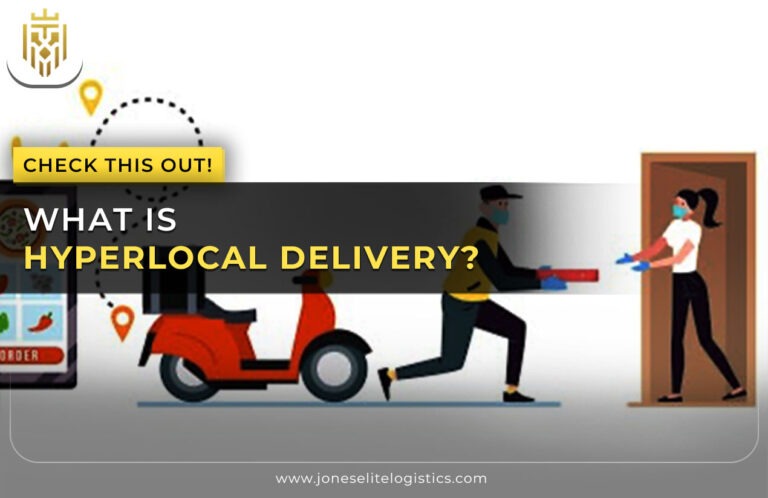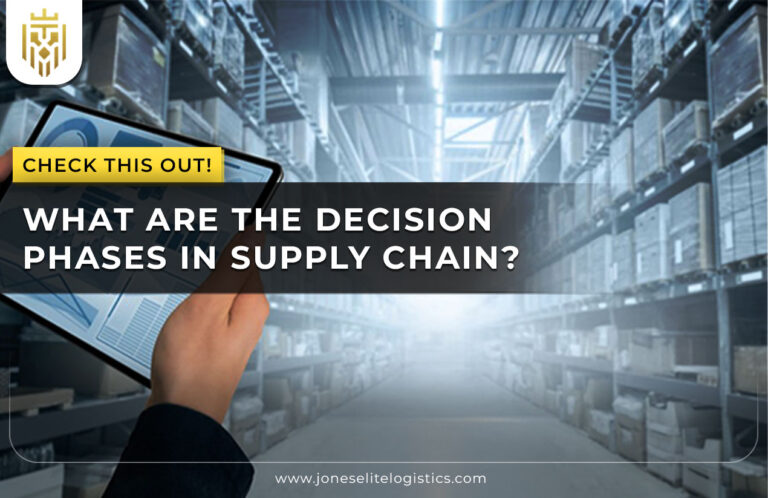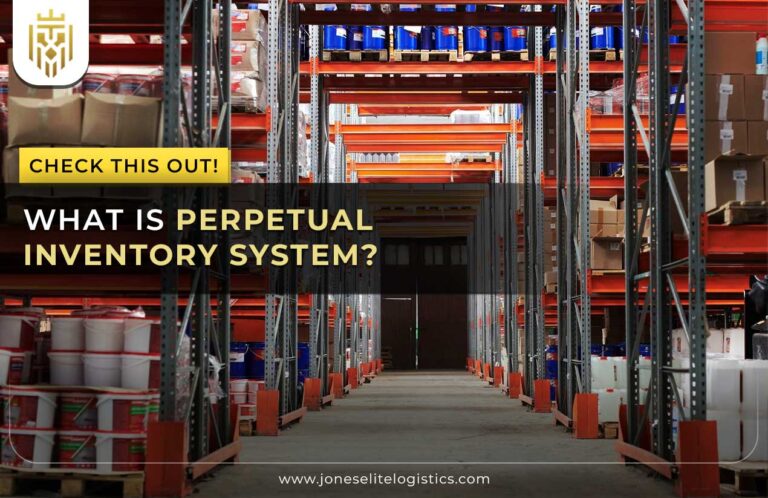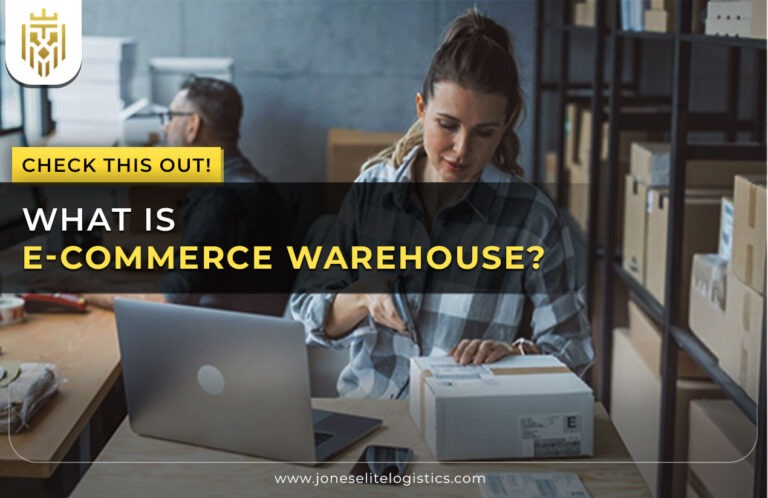What is E-commerce Warehousing?
An ecommerce warehouse is set up specifically to hold and manage goods sold through ecommerce sites. The process in a warehouse includes getting products, structuring them, putting them in packages and sending them to customers. Setting up a warehouse for ecommerce in the right way allows companies to cater to digital sales easily and efficiently.
Why is E-commerce Warehousing Important?
With ecommerce warehousing, companies can deliver their goods quickly, handle warehousing efficiently and keep shipping expenses down. Thanks to these benefits, customers are more satisfied and things run more smoothly day-to-day. If a company sets up the warehouse properly for ecommerce, they can manage more orders with the right stock on hand, which results in their ongoing success and higher income.
How Are E-Commerce Warehouses Different From Traditional Warehouses?
Unlike traditional warehouses, an ecommerce warehouse makes it possible to support high-frequency, low-volume direct-to-consumer orders. A special management system makes sure the ecommerce warehouse process is fast, accurate and includes real-time tracking for many minor shipments.
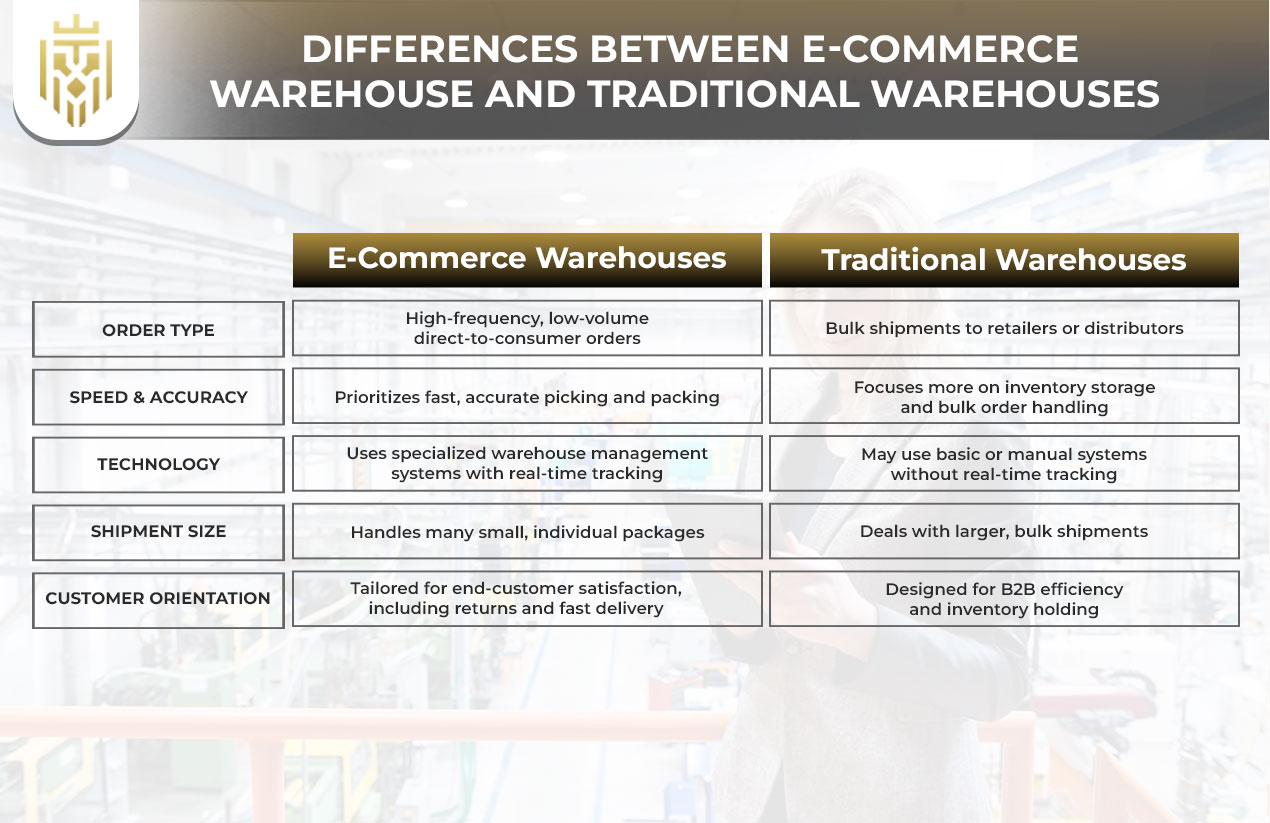
How Does Warehousing Fit into E-commerce Fulfilment?
Storing goods in warehouses near customers is an important way to meet delivery needs in e-commerce. The system takes care of order handling, packaging and inventory management, so online businesses can ship fast and accurately.
Inventory Management
Stock control at an ecommerce warehouse makes sure orders are always met with the correct products. With a good management system, a well-structured commerce warehouse keeps goods organized, always has the same stock level and maintains accuracy, making it easier to complete ecommerce orders on time.
Order Processing
Having a proper warehouse setup for ecommerce makes order processing more efficient. After orders are placed, warehouse systems handle picking, packing and dispatching to ensure the work is done both rapidly and correctly. The main role of ecommerce warehousing helps avoid mistakes and please customers by speeding up and improving the reliability of delivery.
Integration
When inventory orders and fulfilment are integrated, the process in ecommerce warehouses is improved. Using a connected management system, you see what is in stock and efficiently manage orders through internet retailers and commerce warehouses.
Third-Party Logistics
Third-party logistics hand over order storage and shipping in ecommerce warehouses. Such outsourced services allow companies to expand their operations fast. With well-managed warehouses and links to an outside system, e-commerce companies can concentrate on achieving growth.
Flexibility
A correctly configured ecommerce warehouse can handle higher demand during seasons. This method results in stock being standardised, so the system handles outcomes without problems. Thanks to a smart warehouse ecommerce system, businesses can handle changes easily, will spend less and reliably meet what their customers expect.
Components of an E-commerce Warehouse
The main parts are storage areas, stations for picking and packing items, software used for inventory control and places for shipping. They are used together to organize e-commerce warehouses, helping to make things efficient, keep orders right and on a timely schedule.
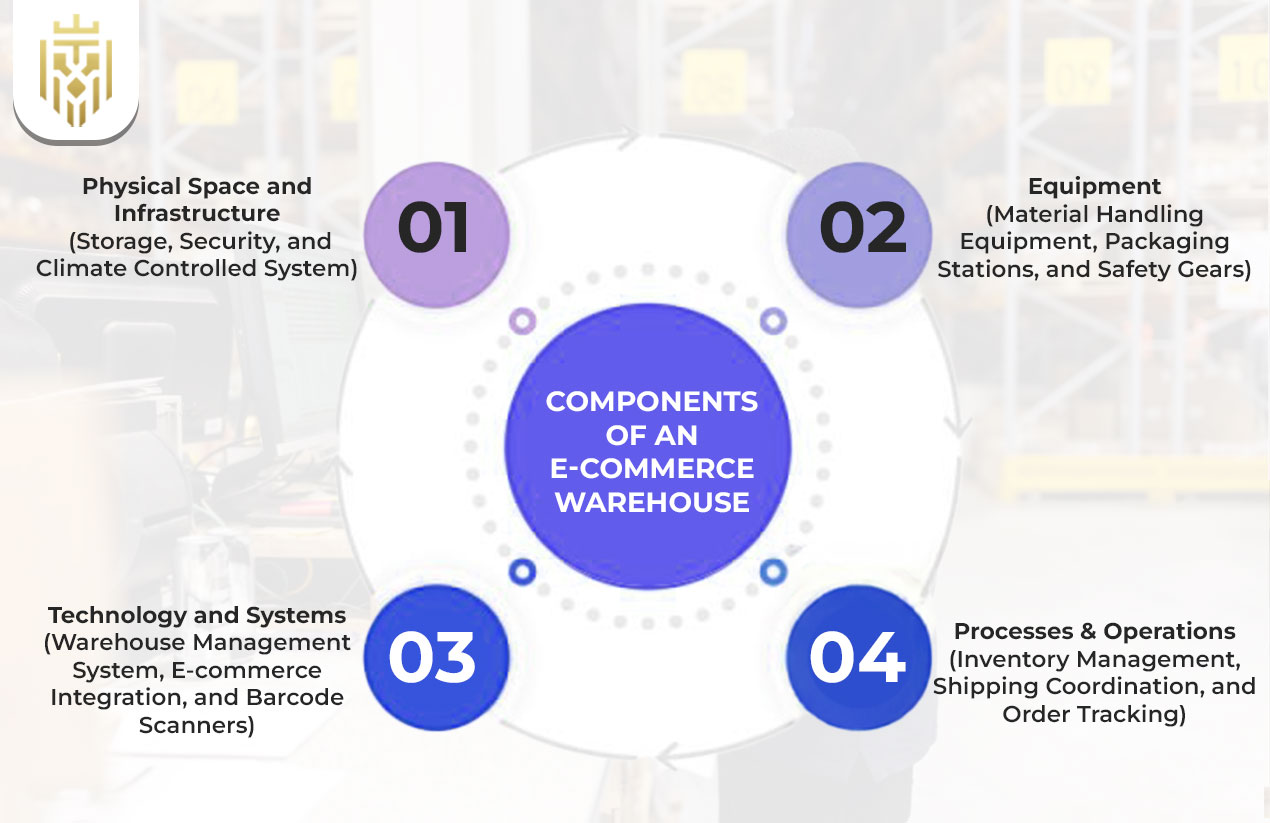
Physical Space and Infrastructure
Every ecommerce warehouse is built on a physical area and essential infrastructure. Every facility should have shelves, keep a proper climate and use a linked management system. Because of these elements, your warehouse is dependable and ideal for both filling orders and expanding your online business.
Storage
Ecommerce warehouses use shelves, racks and zones sensitive to temperature and climate for their products. When a management system is advanced, the goods can be easily found and used. In a commerce warehouse, using digital tools allows for more accurate tracking of inventory which results in faster and more efficient order delivery.
Security
There are physical and digital elements used to secure an ecommerce warehouse. Safeguarding our stock and clients’ information is managed using surveillance systems, fire alarms and safe data methods. These actions are essential for ecommerce warehousing to be safe and reliable and for every warehouse ecommerce operation to function well.
Climate Controlled System
Ecommerce warehouses that store temperature-sensitive goods must have a controlled temperature system. It makes sure food and electronics remain safe from getting damaged. Effective ecommerce warehouses divide their spaces into various climate zones to ensure things stay exactly as they should.
Equipment
In an ecommerce warehouse, different tools are used to handle the process of moving, packing and shipping products. Forklifts and conveyor belts are important parts of an organized ecommerce warehouse system. They help make tasks faster and improve how the warehouse works in ecommerce.
Material Handling Equipment
Ecommerce in a warehouse is most effective when using forklifts, AS/RS and conveyors for moving goods. For ecommerce warehouses, these tools reduce complexity and promote faster, more secure handling of products. Bringing equipment into the management system makes it easier to track orders and ensures greater order accuracy.
Packaging Stations
Order preparation happens quickly in every ecommerce warehouse thanks to the packaging stations. Packaging is accurate at these stations because they come equipped with scanners, printers and workbenches. When connected to the warehouse management system, they make ecommerce warehousing operations work both faster and more accurately.
Safety Gears
A protected ecommerce warehouse relies on PPE, fire products and alarm systems to keep workers and goods safe. Using these safety items makes warehouse ecommerce operations safer and lets employees work efficiently, allowing the operations to continue normally in demanding workplaces.
Technology and Systems
New technology is essential to running a successful ecommerce warehouse. With WMS and automatic systems, organizations can view their current inventory in real time and finish tasks swiftly. Applying new technology to warehousing makes operations more efficient, leading to a flexible and tech-focused warehouse for ecommerce companies.
Warehouse Management System
With a WMS, receiving, keeping track of stock, picking out products and dispatching them are all done electronically in an ecommerce warehouse. Because it makes work more accurate and efficient, it is at the heart of warehouse ecommerce and key to successful digital order fulfilment.
E-Commerce Integration
The success of ecommerce warehousing relies on how well software can connect stores, inventory and logistics. Combining these tools helps warehouse operations, as data is handled faster, there is less paperwork, everything happens more quickly which makes for more accurate processing.
Barcode Scanners
A barcode scanner makes it easy and fast to track what is in stock in any ecommerce warehouse. When included in the management system, they allow for live updates, lower error rates and preserve the efficiency and traceability of all work in the ecommerce warehouse.
Processes & Operations
The foundation of a thriving ecommerce warehouse is how it is managed. Doing receiving, keeping goods safe, finding what is needed and sending products out are all key. A good warehouse management system manages the ecommerce warehouse operations to provide quick delivery and happy online customers.
Inventory Management
When inventory management is in place, warehouses can sell the products customers want. This approach ensures that there are no extra shipments or not sufficient stock to satisfy current orders. When businesses use their commerce warehouse system, they can handle orders much quicker and reduce costly interruptions.
Shipping Coordination
Shipping must be well-coordinated to ensure both fast fulfilment and effective delivery in ecommerce warehousing. A warehouse management system lets you select carriers, organize shipments and manage deadlines which are vital for successful ecommerce warehouse work and pleased customers.
Order Tracking
When orders are tracked in real time, ecommerce warehousing becomes more transparent and customers trust the process more. A unified management system notifies customers about their deliveries and makes it easy for staff inside to address issues fast, boosting the efficiency of the whole warehouse process for ecommerce.
Types of E-Commerce Warehousing
Private Warehouse, Public Warehouse, Bonded Warehouse, Consolidated Service, Smart Warehouse, and Cross-Docking Warehouse are all types of warehousing. They suit businesses of various sizes, have different products and need different shipping, helping to optimize storage, the management of orders and sending out shipments.
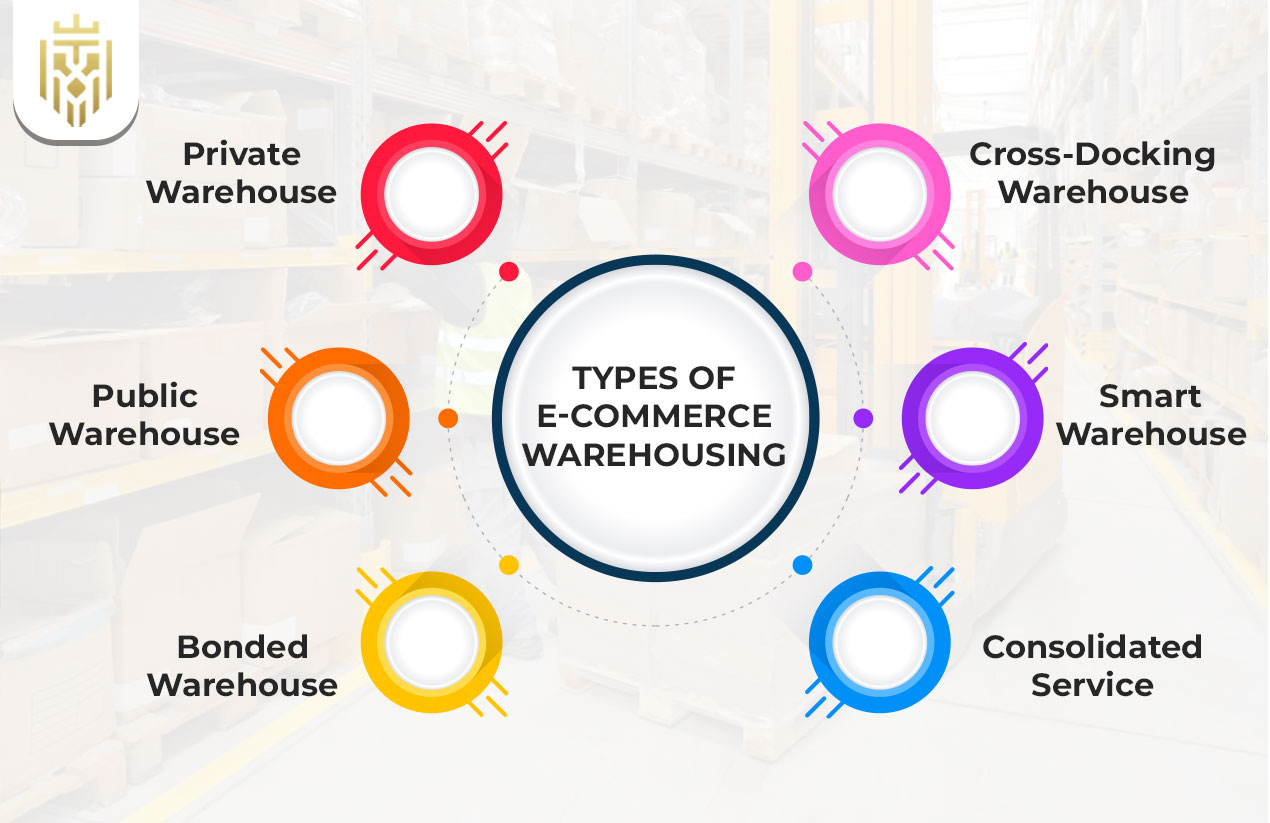
Private Warehouse
Having an ecommerce warehouse for private use means businesses are in charge of their own stock and ways of order processing it. It provides a way to support the management of warehouses according to different needs. This kind of commerce warehouse works well for businesses that consistently need to fulfil orders over a long period.
Public Warehouse
Using public ecommerce warehousing, growing companies can share space and access the services they need. Operating these warehouse ecommerce facilities is less expensive, helping companies to expand rapidly by investing less in physical ecommerce facilities.
Bonded Warehouse
Goods held in a bonded warehouse do not require customs duties to be paid. Such a warehouse makes it possible for businesses to keep their products securely and legally, with taxes owed only when the sale happens which helps control costs and money flow.
Consolidated Warehouse
A consolidated warehouse unites various small parcels into one shipment, saving money on shipping costs. Because of this model, startups with little stock benefit from efficient warehouse and fulfilment systems supported by collaboration and less complexity.
Smart Warehouse
To be efficient, a smart ecommerce warehouse uses robotic systems, IoT and AI. Thanks to these advances, warehouses catch and track inventory quickly, let machines pack items and better manage the system, making ecommerce warehouse operations run smoothly.
Cross-Docking Warehouse
Stored goods are moved immediately from inbound vehicles to outbound ones, so storage needs are low in a cross-docking ecommerce warehouse. Using this model, handling time is reduced and goods are delivered faster. High-volume enterprises prefer it as it makes fulfilment speedy and improves their inventory storage situation.
Challenges of E-Commerce Warehousing
Typical problems companies face are checking the accuracy of their stock, coping with a high number of orders, managing returns, making good use of their warehouse space and delays in the final delivery process. To handle these problems and remain efficient, state-of-the-art tech and flexible approaches are required in the warehouse.
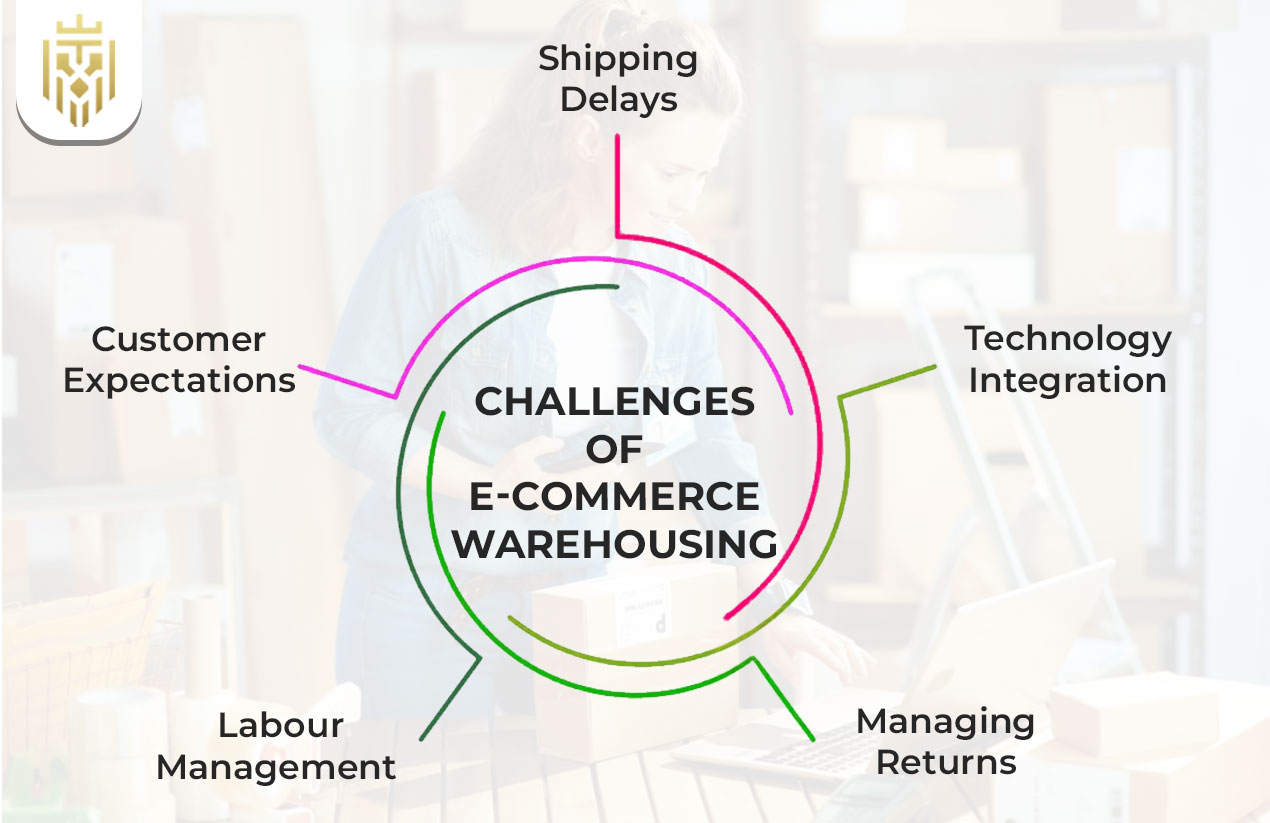
Shipping Delays
When shipping does not go as expected, it disrupts warehouse ecommerce tasks and can damage customer trust. Their arrival delays the ecommerce shipping process, raises the costs associated with storage and causes more problems for warehouse systems. It is important to deal with these delays by working ahead and purchasing efficient logistics and instant monitoring technologies.
Technology Integration
Adding technology to ecommerce warehouses is not always easy. Businesses should join different platforms such as order systems and the management system, in a secure way. If the warehouse and ecommerce platforms do not connect properly, there is a risk that work will be slow, mistakes will arise, results may not be as efficient and important data could vanish, all of which could hurt the workflow.
Managing Returns
Challenges in logistics and putting away new items often disorganize warehouse operations. The system needs to handle items fast and verify that the inventory remains correct. When warehousing is done right in ecommerce, sales are higher, costs go down and sending goods back becomes easier.
Labour Management
Managing staff at ecommerce warehouses is complicated because there is a high volume of orders business-wide and seasonal surges. If a business wants to be productive, it needs workers with high skills, automated solutions and a flexible management approach. Good ecommerce warehousing depends on having people and technology working together to handle demand.
Customer Expectations
Quick shipping, an easy returns process, great customer service and full visibility are what customers want from e-commerce warehousing. Handling these needs calls for both quick operations and technology-powered answers that go beyond classic retail possibilities.
FAQs
1)What is e-commerce warehousing?
An ecommerce warehouse is set up specifically to hold and manage goods sold through ecommerce sites. The process in a warehouse includes getting products, structuring them, putting them in packages and sending them to customers.
2) How to set up an e-commerce warehouse?
A good way to manage a warehouse is to select a suitable place, install suitable software for inventory, sort areas for storage, teach staff and attach the warehouse to e-commerce sites for efficient order processing and shipment.
3) What are the types of e-commerce warehousing?
Types of e-commerce warehousing are private warehouses, public warehouses, fulfilment centres, smart warehouses and dropshipping hubs, each meeting varying storage, order and operation requirements.
4) How much does e-commerce warehousing cost?
How much you have to spend on e-commerce warehousing depends on its size, location, technological features, staff and the services it provides. When shopping online in India, prices usually include storage, bagging or packing and shipping costs which range between ₹10 and ₹30 each time your order is sent out.

